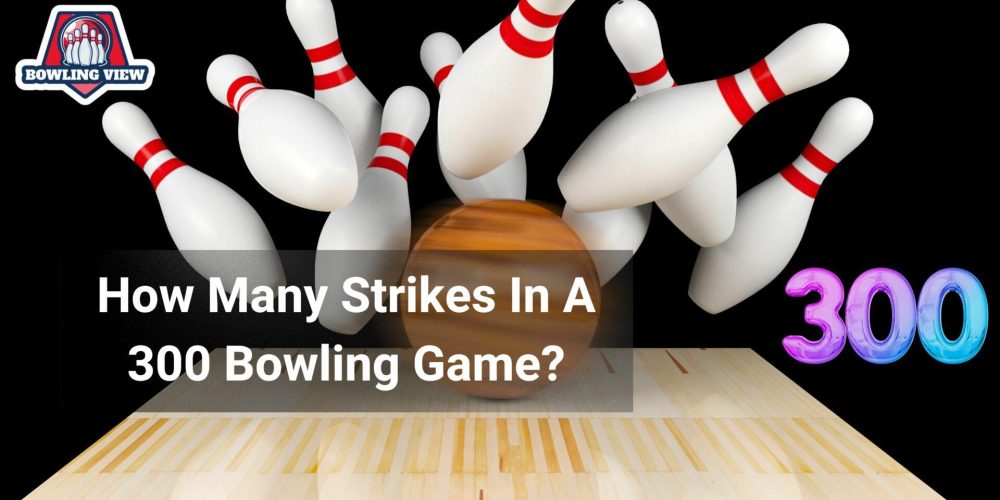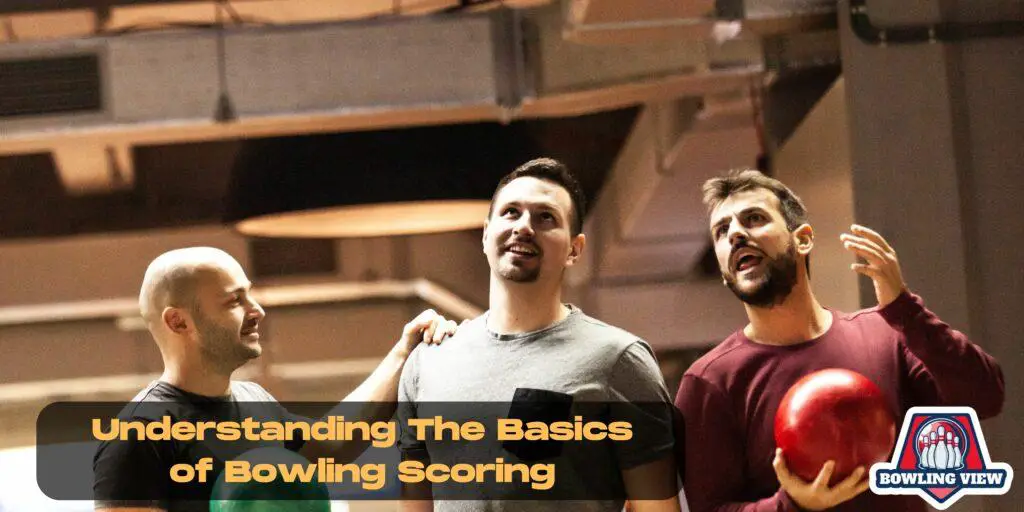How many strikes in a 300 bowling game?” is a common question among bowling enthusiasts. Bowling is not just a fun activity for friends and family, but it can also be an intense competitive sport. Achieving a perfect score in this game requires skill, strategy, and practice.
In order to get the coveted 300 score (also known as 12 strikes), you need to understand how many pins are required for a strike in bowling, have strategies for achieving multiple strikes during one game, know tips that will help increase your chances of getting multiple strikes and refine your technique so that you can maximize your points throughout the game.
This article will provide insight into all these topics so that you can reach the highest scores possible when playing this classic pastime.
Understanding the Basics of Bowling Scoring
If you’re like me, you love hitting the lanes for a good game of bowling, but maybe you’re not as familiar with the scoring system. Fear not! Understanding the basics of bowling scoring is easier than you think.
First off, each frame is worth a total of ten points, and there are ten frames in a full game. When you knock down all ten pins on your first roll, that’s a strike, and you’ll get ten points plus the total of your next two rolls.
If you knock down all ten pins within two rolls, that’s spare, and you’ll get ten points plus the total of your next roll.
And don’t forget about those split pins – those pesky pins that stand awkwardly apart from one another. But don’t worry; with a little bit of practice and patience, you’ll be scoring strikes left and right. It won’t be long until you’re a pro and maybe even score a perfect 300 game!
Perfect Bowling Score Table
| Frame | Roll 1 | Roll 2 | Roll 3 (Only in 10th frame) | Cumulative Score |
|---|---|---|---|---|
| 1 | Strike | – | – | 30 |
| 2 | Strike | – | – | 60 |
| 3 | Strike | – | – | 90 |
| 4 | Strike | – | – | 120 |
| 5 | Strike | – | – | 150 |
| 6 | Strike | – | – | 180 |
| 7 | Strike | – | – | 210 |
| 8 | Strike | – | – | 240 |
| 9 | Strike | – | – | 270 |
| 10 | Strike | Strike | Strike | 300 |
How Many Pins Are Required for a Strike in Bowling
Bowling strikes are one of the most exhilarating parts of the game. These pins are no easy feat to knock down. Did you know that you require all ten pins for a strike in bowling? That’s right! Knocking down just nine pins won’t cut it. It’s not always easy to achieve a strike, but when you do, it feels incredible.
Just think about it, finishing a game with all strikes is an exhilarating achievement. For those not familiar, a 300-game is the gold standard in bowling, where all twelve balls must be strikes.
So, if you’re a bowling enthusiast or someone who has just discovered the game, you’re in for a treat. Grab your bowling shoes and head to the alley; a thrilling game awaits you!
Strategies for Achieving Strikes in 300 Games
Bowling enthusiasts, are you ready to rock the lanes and score some sweet strikes during your next 300 game? Look no further because I’ve got you covered with three killer strategies that are sure to up your score and impress your competition.
First off, make sure you’re aiming for the pocket – that’s the perfect spot between the headpin and the 3-pin for maximum pin action. Secondly, adjust your approach and speed accordingly based on oil conditions, which can have a huge impact on the way your ball moves.
Lastly, don’t be afraid to experiment with different release techniques to find the one that works best for you. Armed with these three tips, you’ll be hitting strikes left and right before you know it. Let’s roll!
Tips to Improve Your Chances of Getting Multiple Strikes in One Game
It’s time to unleash your inner bowling pro and get multiple strikes in one game! With these six amazing tips, you’ll be well on your way to achieving the coveted 300 score.
- Firstly, make sure you’re using the right equipment – the right ball and shoes can make a huge difference.
- Secondly, focus on your stance and approach – keep your game consistent and strong.
- Thirdly, aim for the pocket – it’s the sweet spot for achieving strikes.
- Fourthly, pay attention to your speed; too fast or too slow could ruin your chances.
- Fifthly, stay confident – have faith in yourself and your skills.
- Lastly, use visuals – imagine knocking down all the pins with ease; it’ll help you stay focused.
So what are you waiting for? Start implementing these tips, and get ready to amaze your friends and family with your mad bowling skills!
Practicing and Refining Your Technique to Increase Your Score
Bowling is not just a fun activity to do with friends, but it is also a competitive sport. If you are a beginner, you may think that bowling consists of just throwing the ball down the lane, but there is so much more to it! Practicing and refining your technique is vital to increasing your score in a 300 bowling game. Start by working on your approach, footing, and release.
Pay attention to your hand’s positioning and your ball’s speed. These small details may seem insignificant, but they can make all the difference in achieving a perfect score! As a beginner, be patient and take the time to learn the basics.
Practice consistently and seek guidance from more experienced bowlers or coaches. With a little bit of hard work and dedication, you, too, can improve your bowling technique and increase your score!
If you are left-handed, read the post > Bowling Techniques for Left Handed
Benefits of Striking Out During a 300 Game
Have you ever thought about the benefits of striking out during a 300 game? Well, let me tell you, there are several advantages to doing so! First off, striking out means that you’ve bowled twelve strikes in a row – that’s something to be proud of! Not only does that mean you’ll end the game with a perfect score, but you’ll also be the envy of all your friends.
Plus, striking out can be a confidence booster – knowing that you were able to maintain your focus and skill throughout the entire game can give you a sense of accomplishment.
And let’s not forget about the bragging rights – who wouldn’t want to tell all their friends and family about the time they bowled a perfect game?
Overall, striking out during a 300 game has numerous benefits, and it’s definitely something you should aim for the next time you hit the bowling alley.
Common Mistakes that Could Cost You Points During a 300 Game
Are you ready to bowl the perfect game of 300? Well, avoid these common mistakes that could cost you valuable points! First, make sure your equipment is well-maintained and properly fitted for your hand.
Any small irregularity could throw off your entire game! Also, be mindful of your approach and release. Rushing through these crucial steps could cause your ball to miss its target entirely.
And finally, stay focused and avoid distractions, whether it’s from the spectators or your own racing thoughts. A perfect game of 300 is within reach as long as you steer clear of these pitfalls and stay sharp on the lanes!
conclusion
Striking out during a 300 game is an amazing feat, offering confidence-boosting bragging rights and a sense of accomplishment.
To ensure you’re able to achieve your goal of bowling the perfect game, make sure to maintain your equipment properly, be mindful of your approach and release when throwing the ball, and stay focused on the task at hand.
With these tips in mind, it won’t be long before you’re celebrating with friends after achieving that elusive perfect score!
FAQs
This article provides answers to frequently asked questions (FAQs) about perfect games in bowling, including information on the highest possible score and how to achieve it.
A: A perfect game in bowling refers to scoring 12 strikes in a row, resulting in a total score of 300 points.
A: The highest possible score in bowling is 300 points, which is achieved by bowling a perfect game.
A: To achieve a perfect game in bowling, you need to bowl 12 consecutive strikes, knocking down all the pins in each frame.
A: A perfect bowling score is 300 points, which is achieved by bowling a perfect game with 12 strikes.
A: You need to bowl 12 strikes in a row to get a perfect score of 300 points in bowling.
A: A 900 series in bowling refers to the achievement of bowling three consecutive perfect games, resulting in a total score of 900 points.
A: To score 30 points in a frame, you need to bowl three strikes in a row.
A: To bowl a perfect game of 900, you need to bowl 36 consecutive strikes, which means scoring 12 strikes in each of the three games.
A: The key factors in achieving a perfect game in bowling include controlling your nerves, adapting to lane conditions, and maintaining consistency in your bowling technique.



